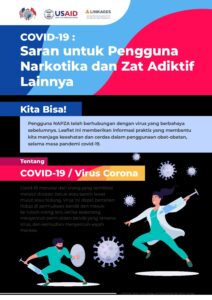July 12, 2022
A questionnaire or “screener” meant to be used with individual patients in a clinical setting to screen for, help diagnose, or monitor progress for individual mental health conditions.
Larger packages or broader-reaching resources that describe actions or activities to be implemented. These may be appropriate for individuals, groups, and/or programs.
Feelings of fear, dread, and uneasiness that may occur as a reaction to stress. Anxiety can be a symptom or a feeling; it can also be a clinical diagnosis of a mental health condition.
A state of emotional, physical, and mental exhaustion caused by excessive and prolonged stress, typically related to one’s work, that is not managed well. Burnout is considered an occupational phenomenon.
Mental or neuropsychiatric disorders, or disruptive, unusual, or maladaptive behaviors that have been evaluated and diagnosed by a trained medical professional.
A mood disorder that causes a persistent feeling of sadness and loss of interest.
A physical or mental condition that limits a person’s movements, senses, or activities.
A sleep disorder, or disordered sleep pattern, characterized by trouble falling and/or staying asleep.
The state of being comfortable, healthy, or happy; judging one’s own life positively; generally, “feeling good.”
A normal adaptive response to traumatic or stressful life events that can result in a wide range of distressing symptoms. Post-traumatic stress disorder (PTSD) differs from PTS and is a clinical diagnosis.
An individual’s belief in their capacity to act in the ways necessary to reach specific goals.
Deliberate injury to oneself as an emotional coping mechanism, ranging from cutting oneself to suicide. Expressions of self-harm and/or suicidality are usually considered an emergency and should be assessed and managed by a trained professional.
The perception that one is cared for, has assistance available if needed, and that one is part of a supportive social network.
Any type of change to one’s internal or external environment that causes physical, emotional, or psychological strain. “Managing stress” is an effort to return from this state of strain or disturbance to homeostasis or well-being.
Use of a substance (usually drugs or alcohol) in amounts or by methods that are harmful to oneself or others. Substance use disorder (SUD) and addiction are distinct clinical diagnoses.
Lasting biopsychosocial and/or emotional response that often results from experiencing a terrible event such as an accident, crime, military combat, or natural disaster, or a series of chronic traumatic events like persistent abuse or neglect.
Individual who receives program services; an entire group or population may be the recipient of services.
Individual who directly provides services to another individual, group, or population (the “program beneficiary”) through a program.

